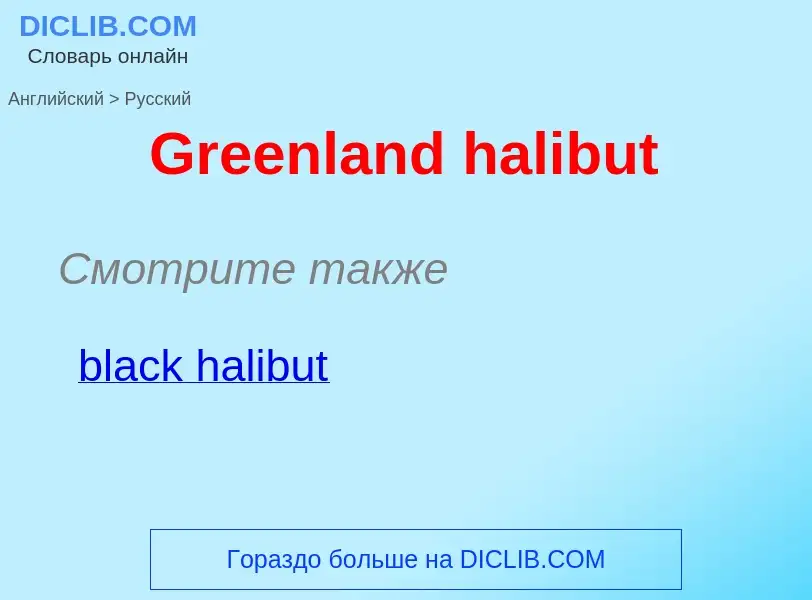Перевод и анализ слов искусственным интеллектом ChatGPT
На этой странице Вы можете получить подробный анализ слова или словосочетания, произведенный с помощью лучшей на сегодняшний день технологии искусственного интеллекта:
- как употребляется слово
- частота употребления
- используется оно чаще в устной или письменной речи
- варианты перевода слова
- примеры употребления (несколько фраз с переводом)
- этимология
Greenland halibut - перевод на Английский
Смотрите также
['hælibət]
общая лексика
палтус (Hippoglossus)
паралихт
ложный палтус (Paralichthys)
камбаловые (Pleuronectidae)
существительное
общая лексика
палтус (рыба)
зоология
белокорый палтус (Hippoglossus hippoglossus)
камбаловые
Определение
Википедия

The Greenland halibut or Greenland turbot (Reinhardtius hippoglossoides) belongs to the family Pleuronectidae (the right-eye flounders), and is the only species of the genus Reinhardtius. It is a predatory fish that mostly ranges at depths between 500 and 1,000 m (1,600–3,300 ft), and is found in the cold northern Atlantic, northern Pacific, and Arctic Oceans.
It has a variety of other English vernacular names, including black halibut, blue halibut, lesser halibut, and Newfoundland turbot; while both Newfoundland turbot and Greenland turbot are in common use in North America (sometimes even without the location, just "turbot"), these names are typically not used in Europe, where they can cause easy confusion with the true turbot (Scophthalmus maximus).
The Greenland halibut is fished commercially across its range with disputes over the fishing rights for this species in the Atlantic Ocean off Canada resulting in the Turbot War of the mid-1990s (a "war" without any injuries or casualties).
The Greenland halibut is a flatfish, and the left eye has migrated during the fish's development so that it is on the right side of the head. However, in this fish, it has not moved as far as in bottom-dwelling flatfish and the fish can probably see forwards. The Greenland halibut can swim in a vertical position and both sides of its body are a speckled brown colour, but the left side is rather paler than the right.
The Hellefisk Fjord in Greenland is named after this fish, hellefisk being the Danish name for Greenland halibut.



![NAFO]]. NAFO]].](https://commons.wikimedia.org/wiki/Special:FilePath/Greenland halibut.jpg?width=200)


![Fishermen in [[Seward, Alaska]], with a fresh catch of halibut Fishermen in [[Seward, Alaska]], with a fresh catch of halibut](https://commons.wikimedia.org/wiki/Special:FilePath/Fishermen with their halibut.jpg?width=200)

